Name Miami Awarded 28 November 1983 Sponsored by Jane P. Wilkinson Construction started 24 October 1986 Length 110 m | Laid down 24 October 1986 Commissioned 30 June 1990 Launched 12 November 1988 Beam 10 m | |
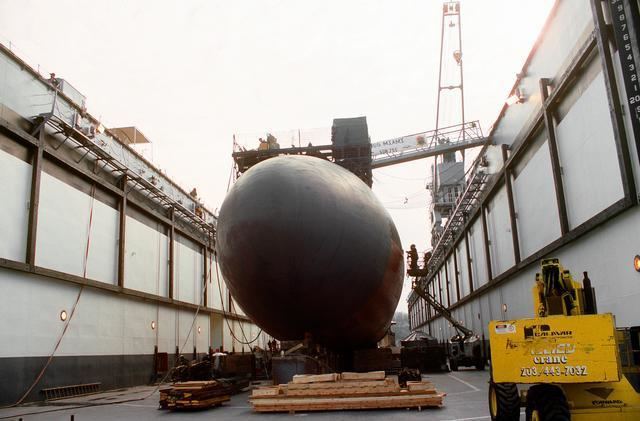 | ||
Builder General Dynamics Electric Boat | ||
USS Miami (SSN-755) was a United States Navy Los Angeles-class attack submarine. She was the third vessel of the U.S. Navy to be named after Miami, Florida. Miami was the forty-fourth Los Angeles-class (688) submarine and the fifth Improved Los Angeles-class (688I) submarine to be built and commissioned. The contract to build her was awarded to the Electric Boat division of General Dynamics Corporation in Groton, Connecticut, on 28 November 1983 and her keel was laid down on 24 October 1986. She was launched on 12 November 1988 and commissioned on 30 June 1990 with Commander Thomas W. Mader in command.
Contents
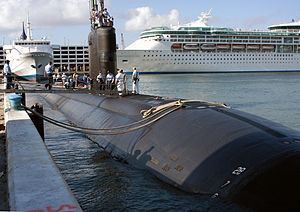
On 1 March 2012 Miami pulled into the Portsmouth Naval Shipyard in Kittery, Maine for a scheduled 20-month Engineered Overhaul (EOH) and system upgrades. A civilian employee started a fire aboard the boat on 23 May 2012. It impacted the forward compartment of the submarine which includes crew living, command and control spaces and torpedo room. The revised estimate to restore Miami increased to approximately $450 million with completion estimated on 30 April 2015. Due to budget cuts, it was announced 6 August 2013 that the vessel would not be repaired and placed on the inactive list. On 28 March 2014, Miami was formally decommissioned.

1999
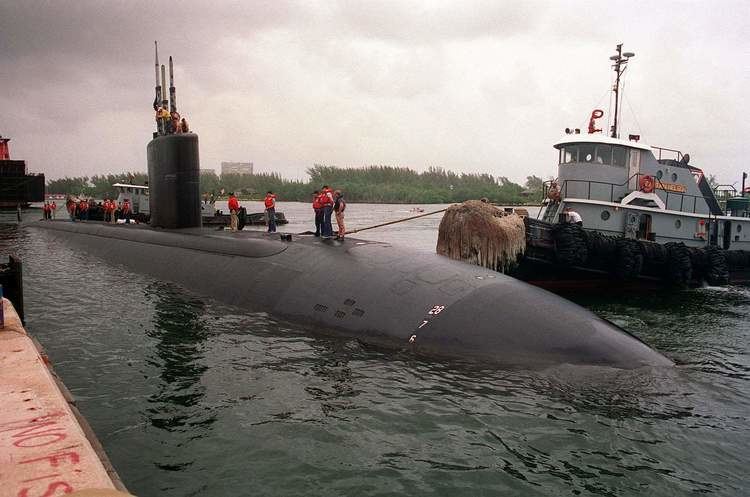
Miami became the first submarine to conduct combat operations in two theaters since World War II (Operation Desert Fox and Operation Allied Force).
2012 fire
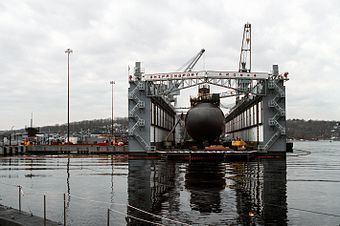
At 5:41 p.m. EDT on 23 May 2012, fire crews were called with a report of a fire on Miami while being overhauled at the Portsmouth Naval Shipyard in Kittery, Maine. At the time the submarine was on a scheduled 20-month maintenance cycle, indicating the submarine was undergoing an extensive overhaul called an "Engineering Overhaul". Injuries to seven firefighters had been reported by national media. One crewmember suffered broken ribs when he fell through a hole left by removed deck plates during the fire. It took firefighters 12 hours to extinguish the fire.
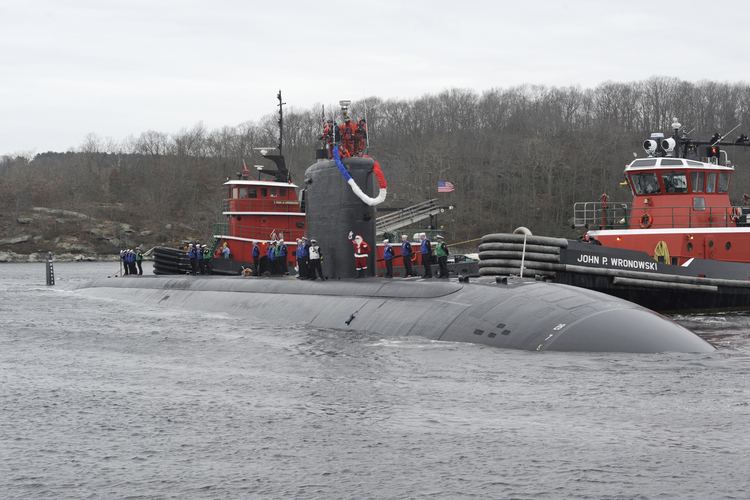
Originally the U.S. Navy reported that the fire started when an industrial vacuum cleaner, used "to clean worksites on the sub after shipyard workers’ shifts," sucked up a heat source that ignited debris inside the vacuum. On 23 July 2012 Casey J. Fury, a civilian painter and sandblaster working on the sub, was indicted on two counts of arson after confessing to starting the fire. Fury admitted to setting the 23 May fire by igniting some rags on the top bunk of a bunk room. He claimed to have started the fire to get out of work early. On 15 March 2013 Fury was sentenced to over 17 years in federal prison and ordered to pay $400 million in restitution.
The U.S. Navy debated on whether to scrap the boat. Both of Maine's Senators, Susan Collins and Olympia Snowe, advocated repairing her. The U.S. Navy asked Congress to add $220 million to the operations and maintenance budget for emergent and unfunded ship repairs to help repair Miami. The final decision was to repair the submarine at an estimated total cost of $450 million. The boat was expected to return to service sometime in 2015. However, congressional inaction to fully resolve the United States fiscal cliff put this in doubt.
To keep costs down, spare parts from the recently decommissioned Memphis were to be used to repair Miami. Furthermore, integrity checks on the hull did not show changes to its metallurgy or strength; fixing the internal sections would be much cheaper than replacing hull sections. At first glance, it seemed more prudent to repair Miami in the same manner as the fellow Los Angeles-class boat San Francisco since such a repair would cost "only" (around) 80 million USD. However, the hull of Memphis was already 26 years old (as of 2012). Memphis is also a different version (or "flight") of 688 submarine, lacking the vertical launch system that the newer Miami had, thus making the two hulls incompatible.
On 6 August 2013, the U.S. Navy announced its intention to decommission Miami, concluding the cost was more than it could afford in a time of budget cuts. A "comprehensive damage assessment" found that the necessary repairs were more extensive than first anticipated. This raised the expected cost from $450 million to $700 million, which would have required the cancellation of work on several other submarines and surface ships. In the end, the Navy determined that repairing Miami was not worth weakening overall fleet readiness. One factor in the heightened cost estimate was the effect of "environmentally-assisted cracking" in the steel piping and fasteners used in the air, hydraulic, and cooling water systems, which required more equipment to be replaced than previously thought. The U.S. Navy will lose five deployments Miami was to make over the ten years that remained in its service life, but funds will be used to support other vital maintenance efforts to improve the wholeness and readiness of the fleet. The sub was officially decommissioned on 28 March 2014, to be disposed of via the nuclear Ship-Submarine Recycling Program.
Miami is the first submarine and nuclear-powered ship to be lost in a U.S. naval shipyard, and the second warship lost in a U.S. naval shipyard, after the loss of the steam frigate Merrimack in 1861.
Commanding officers
USS Miami had eleven commanding officers, all with the equivalent rank of commander:
Commander Spelker became Miami's eleventh and final commanding officer after assuming command from Commander Meyer at Portsmouth Naval Shipyard. Meyer was the last commanding officer to have deployed with the ship itself. The start of the ship's original engineering overhaul and later fire recovery overhaul were overseen by Meyer from March 2012 to November 2013. Spelker oversaw the defueling of the ship's nuclear reactor, inactivation, and decommissioning.
